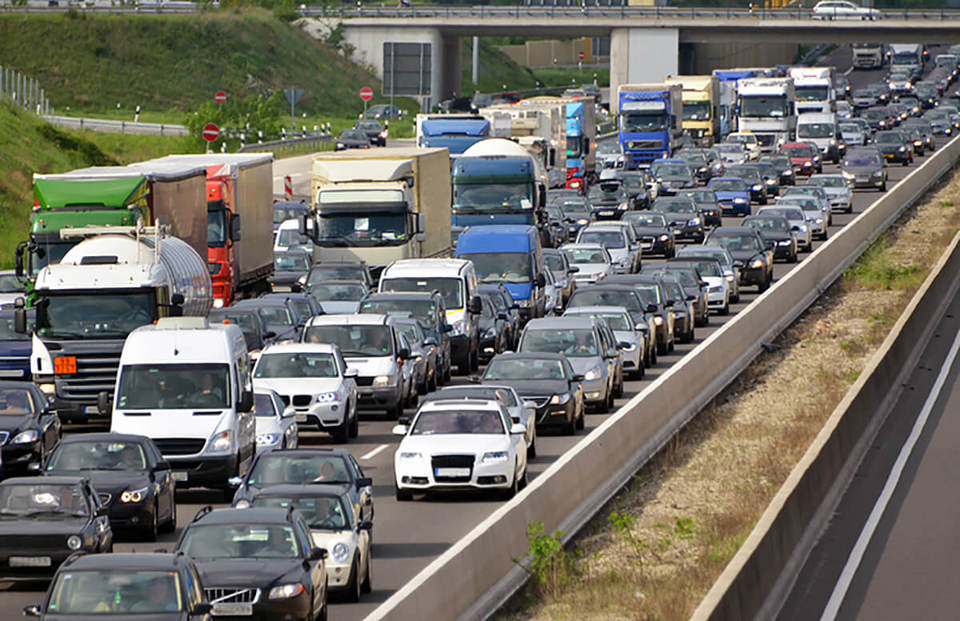Britain and Ireland’s roads have been ranked the fourth safest in Europe in a report published by EuroRAP (the European Road Assessment Programme).
The top performing country in the survey was Sweden, where 85% of the network achieved a low risk rating, compared to 53% in Britain and Ireland.
Italy was bottom of the pile with only 4% of its network achieving a low risk rating.
While Britain and Ireland’s TEN-T roads have performed well when compared to their European neighbours, the study has highlighted different risk rates within the UK.
Scotland’s network is twice as risky as England and Wales, while Northern Ireland is safer than the Republic, but less safe than England and Wales.
And EuroRap highlights sections of the A82 between Glasgow, Fort William and Inverness as having an unusually high risk.
Differences can be partly explained by the lack of consistency in the British network. However, while it used to be believed that single carriageways could not achieve the same safety performance as motorways, EuroRAP says recent Swedish designs driven by its desire to reduce road accident fatalities to zero have resulted in single carriageway designs with safety records exceeding that of motorways.
It believes that English, Scottish and Welsh roads policy might benefit from entering a debate similar to that taking place in countries such as Sweden, Ireland and Iceland where long distance routes with lower traffic levels cannot justify full dual carriageways.
“This report provides useful information for fleet managers on the risk levels of major trunk routes across Europe, which can assist with journey planning for company drivers. It also provides challenges for the new coalition Government to bring UK roads up to the safety standards achieved by the best-performing countries, such as Sweden,” said Roslyn Cumming, Fleet Safety Forum Manager.
“It’s simply unacceptable that almost half of UK and Irish major roads still do not meet EuroRAP criteria for ‘best possible safety conditions’.
“Brake’s Target Zero campaign sets out a vision for road safety that eliminates death and serious injury on our roads. This sets out a vision for the future, including steps that government can take to ensure safety improvements for all users of UK roads.”
EuroRAP’s findings are based on an assessment of roads that are designed to serve the continent – known as TEN-T (Trans-European Transport Networks).
It estimates that more than 20,000 deaths and serious injuries take place on the TEN-T road network each year and that crashes on the network cost the European economy more than £8-billion annually.
“Our report shows that around a third of the TEN-T has reached an acceptable safety standard but there are many more flaws than many thought,” explains John Dawson, chairman of EuroRAP.
“There is still a long way to go to reach a consistently high standard throughout all regions. But, where new motorways can be financed, the survey shows they are paying impressive dividends in safety.
“Immediate attention now needs to be paid to older motorways and the safety standards of roads which will never justify motorway status or for which the wait for finance will be measured in decades.
“Safe road design is paramount in reducing casualties on our roads and providing a safe infrastructure which protects all road users.
“We must reduce the needless personal loss caused by crashes and, with 2% of GDP lost in road crashes, recognise the overriding economic case for investing in safer roads.”
Europe’s risky roads by numbers
- 25,400 miles - length of TEN-T roads currently rated using EuroRAP Risk Mapping
- 15% - the amount of the network - over 3,728m – that has unacceptably high risk
- 31% - Less than one-third (31%) of the EuroRAP TEN-T network length has the ‘best possible’ safety standard
- 50% - of the EuroRAP TEN-T single carriageway length is rated as high risk
- 15 - Number of countries with EuroRAP safety ratings of the TEN-T road network
- 5% - An estimated 5% of deaths on Europe’s roads take place on the TEN-T road network
- 55% - Of all fatal and serious collisions recorded on the TEN-T network surveyed, 55% occurred on motorways, one-fifth on dual carriageways and one-quarter on singles
















Login to comment
Comments
No comments have been made yet.